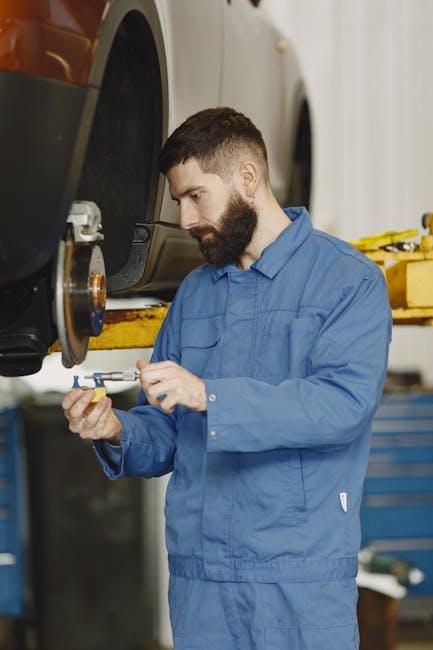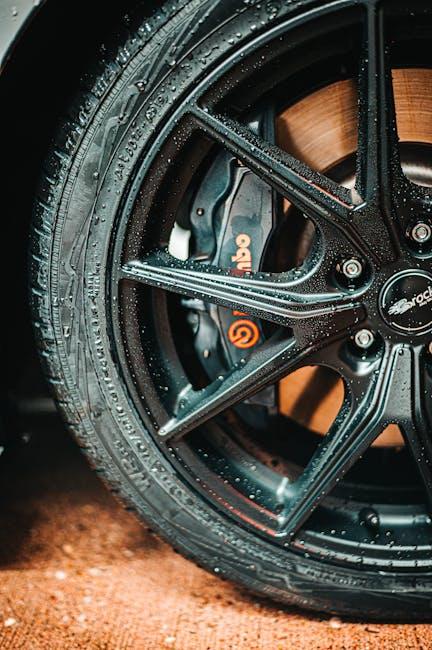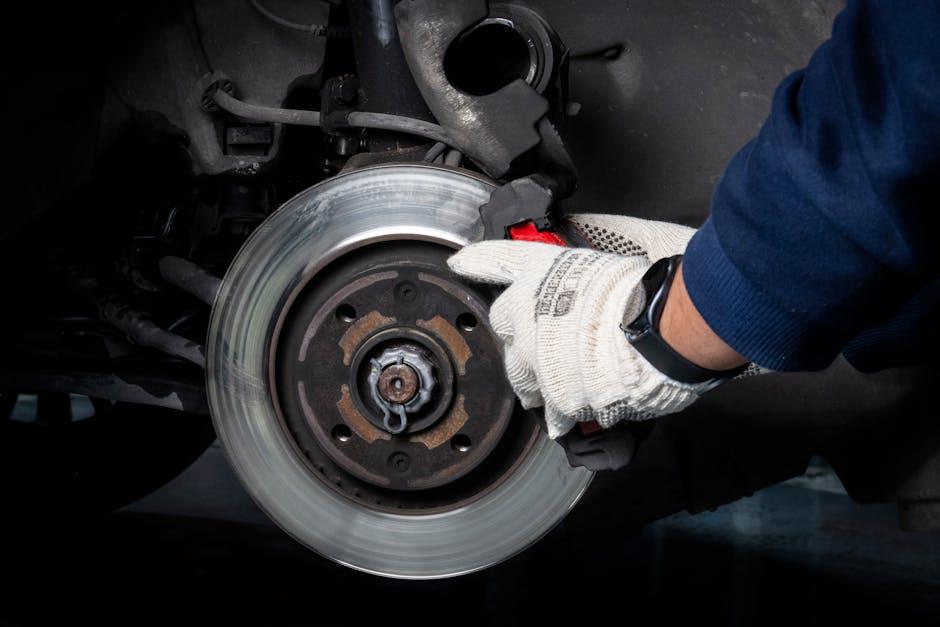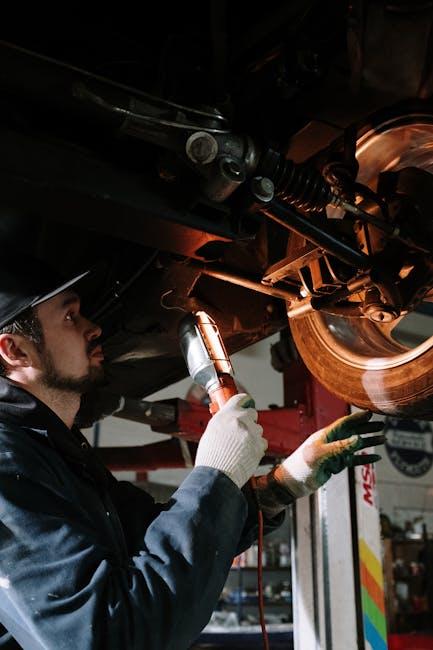Brakes are the unsung heroes of every drive, quietly ensuring our safety with each press of the pedal. Yet, despite their vital role, they often go unnoticed until something feels off. How often should you check your brakes to keep them in top shape and avoid unexpected troubles? In this article, we dive into the rhythms of brake maintenance, exploring practical guidelines and expert insights to help you stay confident and secure on the road. After all, the smooth, safe journeys we cherish begin with brakes that work flawlessly.
Table of Contents
- The Importance of Regular Brake Inspections for Safety
- Signs Your Brakes Need Immediate Attention
- Factors Influencing How Often You Should Check Your Brakes
- Recommended Brake Check Intervals Based on Driving Habits
- How Seasonal Changes Affect Brake Maintenance Needs
- Choosing the Right Professional for Your Brake Inspections
- Q&A
- The Way Forward

The Importance of Regular Brake Inspections for Safety
Maintaining your vehicle’s braking system is crucial to ensuring optimal safety on the road. Brakes wear down naturally due to friction, which unfortunately means their effectiveness diminishes over time. Without regular checks, you risk compromised stopping power, longer braking distances, and in worst cases, complete brake failure. By scheduling systematic inspections, you can catch issues early — from worn brake pads to leaking brake fluids — preventing costly repairs and most importantly, protecting yourself and others from potential accidents.
Pay attention to these signs that indicate it’s time for a brake inspection:
- Squealing or grinding noises when braking
- Vibrations or pulsations through the brake pedal
- Brake warning lights illuminating on the dashboard
- Increased stopping distances experienced during normal driving
- Soft or spongy brake pedal feel
| Vehicle Type | Recommended Inspection Frequency |
|---|---|
| Passenger Cars | Every 12,000 miles or annually |
| Light Trucks & SUVs | Every 10,000 miles or annually |
| Commercial Vehicles | Every 6,000 miles or biannually |

Signs Your Brakes Need Immediate Attention
Your vehicle’s braking system is one of its most crucial safety features, so spotting warning signs early can prevent costly repairs and keep you safe on the road. Pay close attention if you experience unusual noises like screeching, grinding, or squealing every time you press the brake pedal. These sounds often signal worn brake pads or debris caught between components. Another sign is if the brake pedal feels soft or spongy, indicating potential issues with brake fluid or air trapped in the lines.
Additionally, if your car pulls strongly to one side when braking, it may mean uneven wear or a problem with the brake calipers. Vibration or pulsation through the brake pedal can also reveal warped rotors that demand prompt attention. Below is a quick checklist to help you monitor your brakes for symptoms that shouldn’t be ignored:
- Squeaking or grinding noises
- Brake pedal feels soft or sinks
- Vehicle pulls to one side when braking
- Vibrations or pulsations in the brake pedal
- Warning lights illuminated on dashboard
| Symptom | Possible Cause | Urgency |
|---|---|---|
| Squeaking noise | Worn brake pads | High |
| Soft pedal | Brake fluid leak or air in the system | High |
| Vehicle pulls left/right | Uneven brake pad wear | Moderate |
| Brake vibration | Warped rotors | Moderate |

Factors Influencing How Often You Should Check Your Brakes
Determining how frequently to inspect your brakes isn’t a one-size-fits-all scenario. Various elements play significant roles, including your driving habits, vehicle type, and road conditions. If you often drive in stop-and-go traffic or mountainous terrain, your brakes endure more stress and should be inspected more frequently. Conversely, those who take leisurely highway trips might extend the intervals between checks safely.
Other factors that influence the inspection frequency encompass:
- Brake material type: Ceramic, metallic, and organic pads wear differently.
- Weather conditions: Snow, rain, or dusty climates can accelerate wear.
- Load carried: Frequent heavy hauling demands more frequent monitoring.
| Factor | Impact on Brake Check Frequency |
|---|---|
| Driving Conditions | More aggressive driving means more frequent checks. |
| Brake Pad Material | Organic pads may need earlier inspection than ceramic. |
| Vehicle Load | Heavy loads demand closer brake attention. |

Recommended Brake Check Intervals Based on Driving Habits
Different driving habits dramatically influence how frequently you should inspect your brakes to maintain optimal safety and performance. If you mostly drive in city traffic with frequent stops, your brake pads experience more wear, warranting checks every 3,000 to 5,000 miles. Conversely, highway drivers benefit from less frequent brake inspections, approximately every 10,000 miles, as higher speeds and less stopping reduce brake wear. Off-road and mountainous driving, with constant braking on steep grades, demands even tighter monitoring, often recommended every 2,000 to 3,000 miles.
To give you a clearer picture, here’s a quick guide:
- City Driving: Brake inspection every 3,000-5,000 miles
- Highway Driving: Brake inspection every 10,000 miles
- Mountain/Off-Road Driving: Brake inspection every 2,000-3,000 miles
| Driving Style | Recommended Brake Check Interval | Reason |
|---|---|---|
| City Traffic | 3,000 – 5,000 miles | Frequent stops and starts increase wear |
| Highway Cruising | Every 10,000 miles | Steady speeds reduce brake usage |
| Mountain/Off-Road | 2,000 – 3,000 miles | Continuous braking on slopes strains pads |

How Seasonal Changes Affect Brake Maintenance Needs
As the seasons shift, so do the challenges your brakes face. In colder months, moisture and road salt can lead to faster corrosion on brake components, which may cause squeaking or reduced responsiveness. Meanwhile, warmer seasons often bring increased driving on dusty or sandy roads, which can accelerate pad wear and clog brake calipers. It’s essential to pay extra attention during these periods to maintain optimal brake performance and safety.
Understanding these seasonal impacts can help you determine the right frequency for brake inspections. Consider these critical points:
- Winter: Inspect brakes more frequently due to corrosion risks from salt and moisture.
- Summer: Check for debris accumulation and increased pad wear after long drives on dusty roads.
- Spring/Fall: Monitor for brake fluid quality changes caused by temperature fluctuations.
| Season | Main Brake Concern | Recommended Check Frequency |
|---|---|---|
| Winter | Corrosion & Moisture | Every 3,000-4,000 miles |
| Spring | Fluid Quality & Debris | Every 5,000 miles |
| Summer | Pad Wear & Overheating | Every 4,000 miles |
| Fall | Fluid & Component Inspection | Every 5,000 miles |

Choosing the Right Professional for Your Brake Inspections
When it comes to brake inspections, entrusting your vehicle to a skilled and trustworthy professional is paramount. Look for mechanics who specialize in brake systems and have certifications from recognized automotive institutions. Experience speaks volumes, so prioritize workshops with a proven track record of quality service and positive customer feedback. Remember, the right technician doesn’t just fix problems—they provide clear explanations and preventative advice to keep your brakes functioning safely between visits.
Consider these factors when choosing your brake specialist:
- Certification: ASE or manufacturer-specific credentials guarantee up-to-date expertise.
- Experience: Years dedicated to brake maintenance ensure reliable diagnostics.
- Transparency: Clear communication about issues and costs builds trust.
- Customer Reviews: Positive testimonials indicate consistent quality service.
| Feature | Why It Matters |
|---|---|
| Certification | Guarantees skill and adherence to industry standards |
| Experience | Ensures accurate identification of brake issues |
| Customer Service | Builds confidence through clear explanations and ethical pricing |
| Equipment | Advanced tools enable thorough inspections and repairs |
Q&A
Q:
A: Ideally, you should inspect your brakes every 10,000 to 12,000 miles, or roughly once a year. However, this can vary based on your driving habits, vehicle type, and brake system. If you drive in stop-and-go traffic, mountainous areas, or frequently tow heavy loads, more frequent checks might be necessary.
Q: Why is regular brake inspection important?
A: Brakes are your vehicle’s first line of defense against accidents. Regular inspections help catch wear and tear early, preventing costly repairs and ensuring your safety. Over time, brake pads thin out, rotors can warp, and brake fluid can degrade — all of which reduce braking efficiency.
Q: What signs indicate I should check my brakes immediately?
A: Pay attention to squealing or grinding noises, a soft or spongy brake pedal, vibrations when braking, or a longer stopping distance than usual. Any of these symptoms warrant an immediate brake inspection.
Q: Can I check my brakes myself?
A: You can perform basic checks like listening for unusual noises and observing the brake pedal feel. However, detailed inspections—like measuring pad thickness or checking rotor condition—usually require a professional. When in doubt, it’s best to consult a mechanic.
Q: Does the type of brake system affect how often I should check them?
A: Yes. For example, vehicles with disc brakes generally require less frequent maintenance than those with drum brakes. Additionally, cars with advanced braking systems, such as ABS or regenerative braking in hybrids, might have different service intervals outlined by the manufacturer.
Q: How can I extend the lifespan of my brakes?
A: Practice smooth driving habits—avoid sudden stops, reduce unnecessary braking, and downshift when descending hills. Regular maintenance, including timely brake fluid changes and checking brake components, also helps prolong their life.
Q: What does a professional brake inspection include?
A: A thorough inspection covers pad thickness, rotor and drum condition, brake lines, calipers, and brake fluid quality. Mechanics may also test brake response and look for leaks or corrosion.
In summary, while a yearly brake check is a good rule of thumb, staying alert to warning signs and adapting your check frequency to your driving style ensures your brakes are always road-ready.
The Way Forward
In the symphony of safe driving, your brakes play the vital crescendo that keeps every journey secure. Checking them regularly isn’t just a routine—it’s a proactive act of care for yourself, your passengers, and everyone on the road. Whether it’s a quick glance during your weekly car wash or a professional inspection every few months, staying attentive to your brakes ensures that when you need to stop, they respond with confidence. After all, safety doesn’t happen by chance—it’s maintained, one check at a time.
